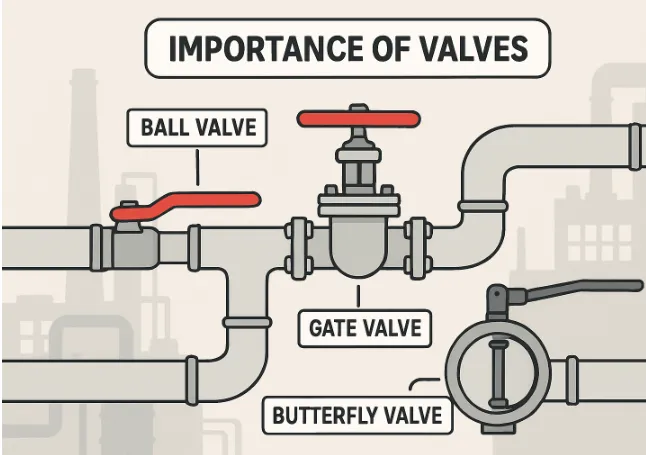Why Pipe Materials Matter More Than You Think
Pipe materials don’t often feature in mainstream conversations, but they should. Though unseen, the choices we make about what’s beneath our floors, behind our walls, and below our streets have a lasting impact. Decisions regarding pipe materials go beyond mere plumbing concerns, influencing health, longevity, environmental footprint, and more. As cities and homes navigate recurring challenges — aging infrastructure, water scarcity, climate change — understanding the nuts and bolts of pipe materials becomes fundamental.
Also Read: Smart Upgrades to Transform Your Old Home into a Modern Masterpiece
Environmental Impact
The environmental credentials of pipe materials vary dramatically. For instance, while PVC pipes are widely utilized due to their durability and low cost, they are derived from non-renewable resources and are linked to toxic pollution during production and disposal. On the other hand, high-density polyethylene (HDPE) pipes — which are slowly gaining traction — are praised for their lower carbon footprint and recyclability. Reassessing our choice of materials is critical in reducing the ecological footprint.
Historic infrastructure must also contend with the problem of repair versus replacement, as renewal often comes with a significant environmental toll. Many experts argue that manufacturing newer, eco-friendly pipes offers better long-term returns for both the economy and the environment.
Incorporating recycled materials into new pipes has emerged as an innovative approach. By turning waste into a valuable resource, companies reduce the need for virgin materials, alleviating the demand on natural resources. Such practices not only cut down production-related emissions but also create a circular economy where resources are reused, maximizing their lifespan. Utilizing recycled content can significantly contribute to a more sustainable infrastructure.
For households and businesses, understanding when to repair existing plumbing or opt for replacements is key to achieving an effective and economic balance in infrastructure management. For those seeking expert guidance and solutions, the best plumbing repair services are from King Heating, who offer valuable insights tailored to individual needs, ensuring the best possible outcomes.
Health Implications
The health of a community can be impacted by something as simple as the pipe beneath our feet. Lead pipes, once the darling of the plumbing world, are slowly being phased out because of their toxic nature. Lead seeping into the water supply poses significant public health risks, particularly for children. Alternative options, like copper and polyvinyl chloride (PVC), reduce these risks.
However, even newer materials like PVC come with their own concerns. Known to leach chemicals, especially when exposed to heat and sunlight, the importance of selecting the right material becomes obvious. As a result, research is ongoing to develop safer, more stable materials that do not compromise our well-being.
Beyond potential chemical leaching, pipes also serve as conduits for harmful bacteria if not properly maintained. Materials like copper and PEX have gained attention for their antimicrobial properties, providing an additional layer of protection against pathogens. Studies suggest that these materials could help minimize the risk of illness from contaminated water sources, highlighting another critical aspect of pipe material choices in safeguarding public health.
Longevity and Durability
Choosing the right pipe material can determine the longevity of the infrastructure. Stainless steel, for instance, is celebrated for its corrosion resistance and strength, making it a popular choice where long-term viability is a priority. On the flip side, it’s expensive and can be economically unfeasible for large infrastructure projects. Composite materials, especially those that merge metal and plastic, present compelling alternatives that promise extended durability at a reduced cost.
The durability of pipes doesn’t just affect maintenance schedules; it plays a pivotal role in water conservation. Pipes must resist wear, pressure, and environmental changes to minimize the risk of leaks—a problem that wastes huge quantities of water annually.
Material choices also influence the infrastructure’s ability to withstand natural disasters. Areas prone to earthquakes, for example, necessitate pipes that can absorb seismic activity and retain functionality. Flexible materials like HDPE have shown considerable promise in such conditions, demonstrating resilience where rigid alternatives might fail. In regions threatened by extreme weather, selecting materials that can endure these conditions is important to sustaining essential services.
Economic Sense
While the initial cost of a pipe material is a consideration, its economic impact stretches far beyond that. Poor material choices can lead to frequent maintenance, premature replacement, and higher operational costs. The domino effect of these decisions cannot be underestimated — unchecked leakage can lead to increased utility bills, infrastructure failures, and a potential dip in property values.
Forward-thinking municipalities and homeowners need to evaluate the long-term cost benefits of their choices. Installing high-quality materials can yield significant savings over time, as reduced maintenance and fewer replacements translate to less capital outlay.
In some areas, governments have begun to offer incentives for choosing sustainable and health-conscious pipe materials. Subsidies and tax breaks for eco-friendly upgrades may offset initial costs, further enticing decision-makers to consider long-term sustainability. These incentives can be pivotal in making advancements in infrastructure possible, showcasing how policy and infrastructure development can align for community benefit.
Conclusion
Comparatively obscure yet inherently significant, the decisions made around pipe materials resonate across health, environment, longevity, and economy. While each material comes with distinct advantages and disadvantages, informed decision-making remains important. Cities with an eye on their future require a reevaluation of their systems, better regulations, and an acknowledgment that what lies below often matters greatly. New technologies and innovations may offer better solutions, but until then, understanding our existing choices is imperative. What runs beneath might not be seen, but it speaks volumes about our priorities.







